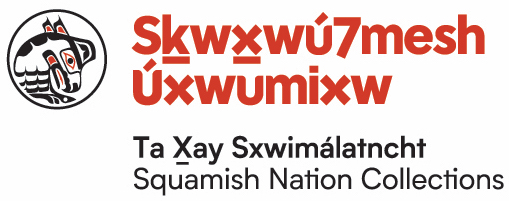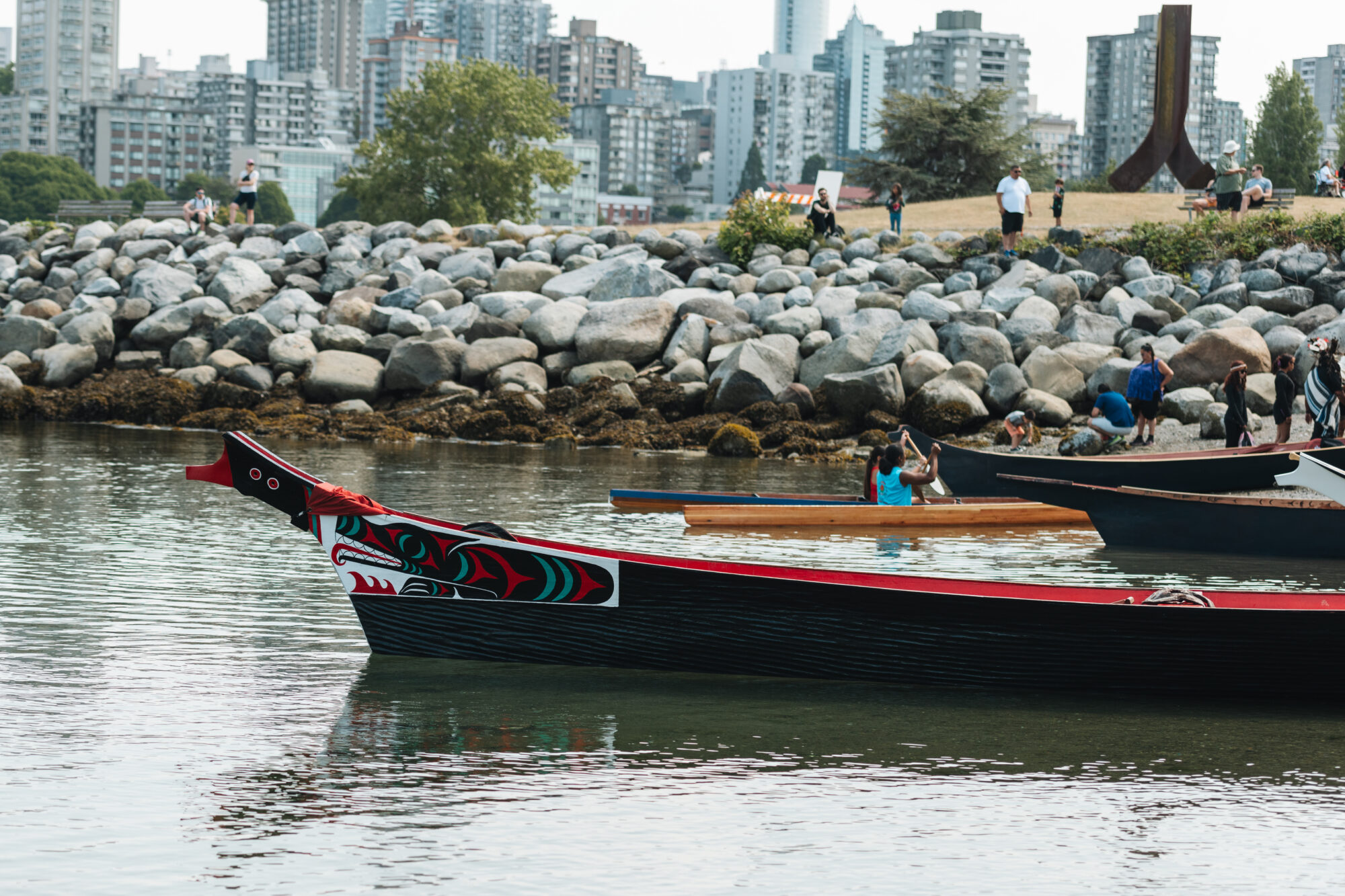
Echoes of Elders: Journeying Through Squamish Nation’s Ancient Heart in Átlʼka7tsem (Howe Sound)
Forget merely ‘seeing’ a landscape. Imagine stepping into a living map, where every inlet, mountain peak, and river bend whispers stories stretching back millennia. This is the profound experience awaiting those who venture into Átlʼka7tsem – the Squamish Nation’s ancestral name for what is commonly known as Howe Sound – guided by the profound historical and cultural significance of their traditional village sites. This isn’t just a travel destination; it’s an immersive journey into the very heart of the Sḵwx̱wú7mesh Úxwumixw (Squamish People) and their enduring connection to their territory.
My review today isn’t of a single, demarcated ‘site’ in the conventional tourist sense, but rather of the holistic experience of exploring Átlʼka7tsem through the lens of Squamish Nation maps of traditional village sites. These aren’t just lines on paper; they are a vibrant record of continuous habitation, resource management, spiritual connection, and an intricate social structure that thrived long before colonial contact. To travel here with this knowledge is to transform a scenic drive or a challenging hike into a pilgrimage.
The Living Map: Beyond Geographic Coordinates

The Squamish Nation’s maps of traditional village sites, often detailed and rich with Sḵwx̱wú7mesh sníchim (Squamish language) place names, reveal a complex network of permanent winter villages (chekw’élhp), seasonal camps (p’iχx̱), resource gathering areas, spiritual sites, and trade routes. These maps are not static historical documents; they are a testament to a living culture, informing land stewardship, cultural revitalization, and a deep sense of belonging that continues to this day. When we look at Átlʼka7tsem, we aren’t just seeing mountains and water; we are seeing the ancient highways, the pantries, the homes, and the ceremonial grounds of the Squamish people.
The beauty of Átlʼka7tsem is undeniable: a dramatic fjord system carving its way inland from the Pacific, flanked by towering, snow-capped peaks, ancient rainforests clinging to precipitous slopes, and a scattering of islands. But to truly appreciate it, one must understand that this was, and remains, a meticulously managed and deeply understood landscape. Every bay provided shelter, every river mouth offered salmon, every forest stood as a pharmacy and a larder. The traditional village sites were strategically located to leverage these resources, facilitate trade, and protect communities.
Immersing in the Ancient Heart: Key Experiences
To experience Átlʼka7tsem through the lens of Squamish Nation history is to engage with its elements in a new way. Here are the core experiences that illuminate this profound connection:

1. The Sentinel of Siyám: Stawamus Chief
The Stawamus Chief (Siyám̓ Sqiách) is an undeniable icon of the Squamish landscape. While not a village site itself, this colossal granite monolith stands as a silent, ancient sentinel overlooking the confluence of the Squamish and Mamquam Rivers, a region historically teeming with Squamish villages. From its lofty summits, one gains a breathtaking panoramic view of the entire valley, the river estuary, and the vast expanse of Átlʼka7tsem – a view that would have been intimately familiar to countless generations of Squamish people.
The Experience: Hiking the Chief is a challenging but incredibly rewarding endeavor. As you ascend, imagine the Siyám (respected leaders) of old gazing out from these very heights, strategizing, observing, and connecting with the land. The effort required to reach the top fosters a deeper appreciation for the rugged beauty and the scale of the traditional territory. From the First, Second, or Third Peaks, the intricate network of waterways and the strategic placement of ancient settlements become strikingly clear. You can almost feel the presence of the ancestors, their eyes scanning the horizon for salmon runs, incoming canoes, or signs of the changing seasons. It’s a physical and spiritual connection to the land that is difficult to replicate elsewhere.
2. The Lifeblood: Squamish River Estuary

The Squamish River Estuary is perhaps the most significant area for understanding the Squamish Nation’s traditional way of life. This vast wetland, where the freshwater of the Squamish River meets the saltwater of Átlʼka7tsem, was the heart of their resource economy. Traditional village sites were densely clustered here, drawn by the incredible abundance of salmon, eulachon, and other marine life. The estuary was a bustling highway of canoes, a vibrant hub of fishing, processing, and trade.
The Experience: Rent a kayak or paddleboard and explore the calm, winding channels of the estuary. This low-impact form of travel allows you to glide through the waters that were once the lifeblood of the Squamish people. Observe the diverse birdlife – eagles, herons, and various waterfowl – that continue to thrive here. In late summer and fall, witnessing the salmon runs is a profound experience, connecting you directly to the ancient cycles that sustained the Nation. As you paddle, visualize the cedar longhouses that once lined these shores, the smoke of fires rising, and the rhythmic sounds of daily life. The estuary is not just a natural wonder; it’s a palpable connection to a vibrant ancestral past.
3. Navigating the Waterways: Canoeing Átlʼka7tsem
The Squamish people were master mariners, their cedar canoes (ímes) serving as essential transport for trade, hunting, fishing, and inter-village communication. The entire fjord system of Átlʼka7tsem was their highway, with traditional village sites strategically located along its shores and on its many islands.
The Experience: Embark on a boat tour or, for the more adventurous, a multi-day sea kayaking trip through Átlʼka7tsem. As you ply the waters, consider the immense knowledge of tides, currents, and weather patterns that was essential for safe passage. Explore the countless coves and inlets that would have provided shelter, resource gathering opportunities, and temporary camps. While the exact locations of many ancient sites are often unmarked and best left undisturbed, the act of traveling the waterways gives a profound appreciation for the interconnectedness of their world. Islands like Nexwlélexwm (Gambier Island) and Áyix̱w (Bowen Island) were not merely landmasses but integral parts of the Squamish territory, dotted with seasonal camps and resource sites. The sheer scale and intricate nature of this aquatic highway reveal the sophistication of their traditional travel and resource networks.
4. The Cultural Heartbeat: Squamish Lil’wat Cultural Centre

While not directly within Átlʼka7tsem, a visit to the Squamish Lil’wat Cultural Centre (SLCC) in nearby Whistler is an indispensable complement to exploring the traditional village sites. The SLCC offers a deep dive into the rich history, art, and living culture of both the Squamish Nation and the Lil’wat Nation.
The Experience: At the SLCC, you’ll gain invaluable context through captivating exhibits, traditional performances, and direct interactions with Squamish and Lil’wat cultural ambassadors. Learn about the oral traditions, the significance of cedar, the artistry of weaving and carving, and the social structures that underpinned their communities. This visit provides the narratives and understanding that bring the physical landscape of Átlʼka7tsem to life. It helps you understand the people who inhabited those village sites, their values, their resilience, and their ongoing connection to their ancestral lands. It’s a crucial step in transforming mere sightseeing into meaningful cultural immersion.
Respectful Engagement: Walking on Ancestral Lands
To truly review and recommend this experience, it’s paramount to emphasize the importance of respectful engagement. You are a guest on unceded Squamish Nation territory.
- Acknowledge and Learn: Take the time to learn about the Squamish Nation. Understand that these are not just "old" sites, but places of profound historical and contemporary significance.
- Leave No Trace: Practice strict Leave No Trace principles. Pack out everything you pack in. Do not disturb any natural or archaeological features.
- Support Indigenous Businesses: Seek out and support Squamish Nation-owned businesses, artists, and tourism initiatives.
- Listen and Observe: If you have the opportunity to interact with Squamish Nation members, listen to their stories and perspectives with an open heart and mind.
- Be Mindful of Sacred Sites: Not all important sites are publicly marked or accessible. Assume that the entire landscape holds significance.
Practical Travel Tips
- Getting There: The town of Squamish, the gateway to Átlʼka7tsem, is a scenic 45-minute drive north of Vancouver along the Sea-to-Sky Highway (Highway 99).
- Best Time to Visit: Spring and Fall offer fewer crowds, vibrant colours, and active wildlife. Summer is popular for water activities and hiking, but can be busy. Winter offers unique opportunities for eagle viewing in the estuary.
- Accommodation: Squamish offers a range of hotels, B&Bs, and campgrounds.
- Activities: Beyond the focus on traditional sites, Squamish is a world-class destination for rock climbing, mountain biking, hiking, kiteboarding, and watersports.
- Safety: Always be prepared for variable weather, especially in the mountains. Inform someone of your hiking plans and carry appropriate gear.
Conclusion: A Transformative Journey
Reviewing Átlʼka7tsem through the lens of Squamish Nation traditional village sites is not about rating a specific landmark; it’s about advocating for a deeper, more meaningful way to travel. It’s about shifting perspective from passive observation to active engagement with a landscape imbued with thousands of years of human history and cultural resilience.
This journey through Átlʼka7tsem offers more than just stunning vistas. It provides an opportunity for profound learning, for connecting with the enduring spirit of the Sḵwx̱wú7mesh Úxwumixw, and for understanding the intricate relationship between a people and their ancestral lands. It is a transformative experience that leaves you not just with beautiful memories, but with a heightened sense of respect, wonder, and a deeper understanding of the living history beneath your feet. To travel here with an open mind and heart, guided by the echoes of the elders, is to discover a truly ancient heart beating strong in the modern world. It is, without reservation, a journey I wholeheartedly recommend.
